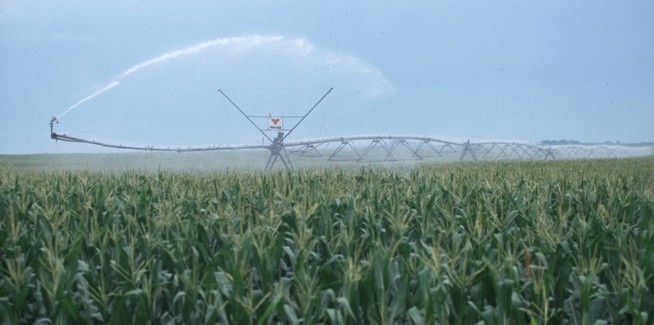Apps that Increase Irrigation Efficiency
1. Pumping performance
What’s the fastest way to eat through fuel during irrigation? Use an under performing pump. Now you can get an app to help correct that expensive problem. This is one of four different apps created by the University of Nebraska.
Designed for both iPhone and iPad, the pumping plant app (UNL A10001) employs existing records to help determine if a pumping plant should be tested by a professional.
Past University of Nebraska surveys reveal that many pumps used 30% to 50% more energy than expected as determined by the Nebraska Pumping Plant Performance Criteria (NPC). Relatively new pumping plants operate at 82% to 92% of NPC.
The NPC is based on field tests of pumping plants, lab tests of engines, and manufacturer data on three-phase electric motors. This easy-to-use app guides you to input numbers, including pumping lift, pressure at the discharge, acre-inches of water pumped, fuel price, and total fuel used. The app then calculates a pumping performance while providing the estimated cost to bring the pumping plant up to standard and the years to pay back that investment.
2. Center pivot costs application
Another University of Nebraska app readily calculates center pivot irrigation costs. The software allows you to peg the cost of using a pivot to irrigate adjoining land.
To use the Irrigation Cost Calculator, you enter data specific to your operation. You can choose to save your data for later reference or to input various options to compare costs. This software tool requires the following:
• Interest rates, wage rates, area irrigated, inches applied, diesel price or electricity rates, and drip oil price. Energy costs may be estimated from pumping lift, system pressure, and pumping plant efficiency or from historical data such as past energy costs, past fuel prices or electrical rates, and past application rates.
• Ownership costs such as the replacement price, expected life, and the salvage values for the well, pump, power plant, gear head, and sprinkler system.
• Calculated outputs including fixed and variable costs calculated per-acre and per-acre-inch of water applied.
The app calculates fixed and variable costs figured per-acre and per-acre-inch of water applied. Plus you can use the app’s Fair Share feature to estimate the cost for running a pivot over adjacent land.
Access the calculator at agecon.unl.edu/irricost. This Web page also includes a video on how to use this tool.
3. Pivot vs. flood calculator
A variation of this software, the Agriculture Irrigation Costs app (UNL A10002), calculates ownership and operating costs for center pivot and gated pipe irrigation systems and the most commonly used energy sources.
The Web app is a quick-and-dirty means to calculate costs, while the mobile app offers more options for testing and analyzing various options.
The mobile app offers side-by-side comparisons for systems that use different energy sources, analysis of gated pipe, as well as center pivot systems, separation of landowner and tenant costs, and calculating yield increases necessary to pay for application of an extra inch of water.
Access this app at ianrpubs.unl.edu/sendIt/a10002.html.
4. Real-time irrigation
The University of Nebraska crop modeling team just announced the release of CornSoyWater. This Web and mobile app assists irrigators to determine in real-time available soil water in a particular field and when to irrigate. The program currently covers Nebraska and surrounding states, but it will be expanded to other states at a later date.
CornSoyWater employs real-time weather data and field-specific crop information provided by the user. It uses simulation to track, from planting to now, crop water use, water inputs from rainfall and past irrigation, soil moisture available at root depth, and possible crop water stress. Irrigation is recommended for a field if crop water stress is indicated currently or within the next three days if no significant rainfall is expected.
Access the app at hprcc-agron0.unl.edu/cornsoywater/public _html/Home.php.
(Source – http://www.agriculture.com/technology/mobile/apps/4-apps-that-increase-irrigation_573-ar50640)













Submit a Comment